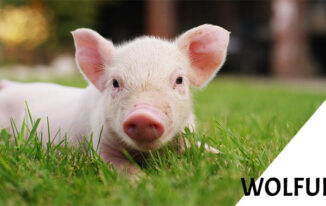Each day we turn the wheel of life and it’s samsaric mechanisms. Like cogs in an illusionary clock we blindly circle it’s karmic center as we move from one realm of life to the next. This is the fundamental teaching described within the Buddhist paradigm known as the ‘Wheel of Life’. Within it’s spokes is chronicled the twelve links of dependent origination. Each link a phenomenal state that defers only by it’s degree of unhappiness or dissatisfaction.
The ‘Wheel’ symbolizes the Buddhist perspective on a life lived in ignorance of ultimate truth. It is held fast by the clutches of ‘Yama’, a wrathful deity known as the ‘Lord of Death’. He is the manifestation of Samsara; the seemingly endless cycle of reincarnation. Outside of the Wheel stands the Buddha as guide pointing the way to liberation.
To understand the teaching it is best to begin the examination at it’s hub where the three roots of delusion reside. The first is hatred, symbolized by a snake, second ignorance personified by a rooster and the third greed represented as a pig. Around the central hub is a ring representing the karmic states of existence. The figures on the left are ascending to higher realms of existence, because of virtuous actions, as the figures on the right descend to lower realms, because of evil or ignorant deeds.
Moving outward the next ring is the largest and divided by six spokes. Within each segment the six realms of phenomenal experience are illustrated. The top half, from left to right, portrays the three higher realms of existence; humans, demigods and gods. The lower half depicts the three lower realms; animals, hungry ghosts and hell-beings. It maybe helpful to think of these realms as metaphorical examples of mental conditions.
Within each segment is pictured a different realm into which sentient beings take rebirth; divas, gods or demigods (a demigod is described as an anti-god or jealous god), humans, animals (sentient beings from whales to insects), hungry ghosts (depicted as having a tiny mouth with large stomach – never able to fulfill it’s hunger), hell beings (there are eight different hells possible and each a product of the mind). These segmented realms relate to six distinct mind conditions: Pride and jealousy fall within the realm of gods and demigods. Humans are afflicted with five disturbing emotions; naivety, arrogance, craving, jealousy and anger. The lower realms of animals, hungry ghost and hell beings are associated with ignorance, desire and anger.
Beyond this is the uppermost ring that describes pictorially the twelve stages of ‘dependent origination’. The first stage expresses fundamental ignorance of the true nature of sentient beings. It is depicted as a blind man with a cane. Moving clockwise around the wheel the workings of karma are next. It is embodied by the image of a potter molding a pot, (the shaping of destiny). Next the aimless wanderings of the mind is expressed by a monkey climbing a tree, swinging from branch to branch without thought.
Progressing further the concept of self-consciousness evokes self awareness, (name and form). This is portrayed by the image of people traveling in a boat on a river. The next stage is reflected in an image of an empty house with it’s doors and windows open. This symbolizes the developing sense organs; sight, smell, taste, hearing, touch and thought. These senses, in turn, allow us to establish contact with the world around us as portrayed by the image of lovers embracing. From contact arises categorize feelings; pleasant, unpleasant or neutral. This is illustrates as an arrow piercing an eye. Feelings give rise to desire or attachment which is depicted by a couple falling in love (sometimes illustrated as a man drinking alcohol). Attachment leads to grasping shown by a monkey (the mind) picking fruit. Phenomenal existence arises from grasping. This is pictured by a man and a woman making love. Existence spontaneously culminates in birth, the entrance into the samsaric realm, it is expressed by a woman in childbirth. Finally birth naturally leads to aging and death symbolized as an old man carrying a burden.
This is the only teaching Buddha wrote in his own hand. Drawing the diagram in sand he reinforced the essential precept that all phenomenon is merely temporary. At first glance the teaching paints a rather bleak picture. However within it’s structure are lessons which inspire awareness. It is this awaking that leads to the complete liberation from what appears to be the nearly eternal entrapment of mindless wandering. We are the dreamers lost within our own dreams and unaware that we are dreaming. To understand and recognize our individual roles and participation within this system empowers each of us to discover the innate freedom which lies dormant within us; our Bodhi self.
The man stopped and asked the Buddha,
“My friend, what are you? Are you a celestial being or a god?”
– “No,” replied the Buddha.
“Well, then, are you some kind of magician or wizard?”
Again the Buddha answered, – “No.”
“Are you a man?” – “No.”
“Well, my friend, then what are you?”
The Buddha replied, – ”I am awake.”























